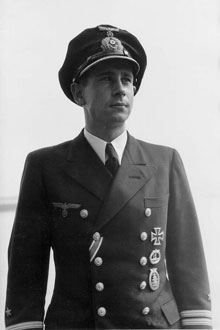The U-Boat Bases Of Brugge, Zeebrugge And Oostende
by Johan Ryheul
When we talk about U-boat bases we immediately think about the enormous U-boat bunkers of the Second World War at, for example, Saint Nazaire, France. However we forget that the U-boat bunker is not something that was invented in this period of time, but in the 1st World War.
The Flanders harbours would become very important U-boat bases, but the nerve centre of the triangle Oostende-Brugge-Zeebrugge would become the harbour of Brugge.
Brugge Harbour
First of all a number of floating docks were prefabricated in Germany and then brought in pieces to Brugge harbour where they were assembled. A total of eight big ones and three small ones were delivered each of them having an independent pumping installation. They were to be used not only for the U-boats but also for the torpedo boats and destroyers.
Floating dock N° 1 had a length of 50 meters by 15 meters
N°2 was 100 meters by 17 meters
N°3 was 100 meters by 23 meters
N°4 was 100 meters by 15 meters
N°5 was identical to N°4
N°6 was 60 meters by 12 meters
N°7 was 100 meters by 20 meters but was still in construction by the end of the war. So was N°8.
The numbers 9, 10 and 11 were much smaller types and were used for the U-boats.
In the Groot Handelsdok (Big Tradedock) came two 'Kragunterstanden'. These were in fact two enormous roofs of metal and concrete hanging over the water of the dock under which the U-boats had some degree of safety against aerial attacks. They were however not strong enough to withstand a direct hit.
Facing the canal Brugge-Zeebrugge, the one on the right side was 73 meters long, the one on the left side 200 meters long. Between the two other docks, on the left side of the canal there was some kind of a peninsula in which two large concrete U-boat bunkers were constructed each measuring 70 on 10 meters. But the most important construction was an enormous bunker with 8 compartments called the 8 Blessings by the local population. Construction of it started in 1917 and it was big enough to house 8 of the large UBIII class submarines.
Two very large bunkers were constructed in the harbour area measuring 17 on 26 meters and 26 on 36 meters who served as assembly hall for respectively the sea mines and the torpedo's. The small number of doors and windows in it could be protected from air raids by concrete panels of 40 cm thick which ran on small rails. Both bunkers were just next to a real railway.
There were also two underground galleries. The first one of 350 meters and the second one of 200 meters.
Around these installations were 13 anti-aircraft batteries protecting it from air raids.
Until today there have been discussions between historians if there were a number of these so called Kragunterstanden along the canal from Brugge to Zeebrugge. And although many have suggested there were a number of them for protection against enemy planes we have never seen any of these of photographs from that time. So it still remains some kind of mystery even today.
Zeebrugge Harbour
One should expect very important installations in this harbour as most of the shipping-traffic was coming from this harbour, but that was not the case at all. Of course there were the existing installations on the harbour mole but not much was added to them especially for the U-boats. More value was given here to the protection of the seaplane base on it.
On the eastern side of the mole was also a Kragunterstand. We don't know its measurements but we expect it not to be larger than the smallest one at Brugge, 73 meters in total.
In what is now the military port of Zeebrugge there was also a very large concrete U-boat bunker. Although bunker is not the exact word for it. It looked more like a construction of concrete piles with a thick concrete roof over it. No measurements are known but it should have been in the area of 80 by 10 meters.
Oostende Harbour
This city always has had trouble concerning its history. The people from the city just don't seem to bother to care, not even a little bit, for their historic documents. Old maps of the harbour are very big curiosities and photos are even harder to find. And concerning the installations of the Kaiserliche Marine it was no better.
Fortunately the Belgian government cares more about its papers and thus we were able to trace back a few things. Fact is for example that there was constructed a floating dock of 2000 tons. It was in the dock of the former Belgian Navy.
On one side of the dock were the existing workshops of the Belgian navy. On the same side there was also a Kragunterstand, probably not even 50 meters long.
On the other side were constructed two dry-docks that were long enough to have two submarines in them one behind the other.
Protection of the harbour installations was done by the Battery Gross Herzog that could be found at two places in the harbour. The southern part had four 8.8 cm guns, reduced to two by the end of the war. Two other pieces stood closer to the north near the sea. There was also a third location with AA guns more specific also four 8.8 cm guns which listened to the name Friedrich.
It could be very busy in the harbour of Oostende. For example in November 1917 63 submarines and 36 torpedo boats arrived there for repairs or provisions. There were also 55 other vessels visiting the harbour on their way back home or joining their units.
This article was published on 9 Aug 2002.
|
Books dealing with this subject include
|

